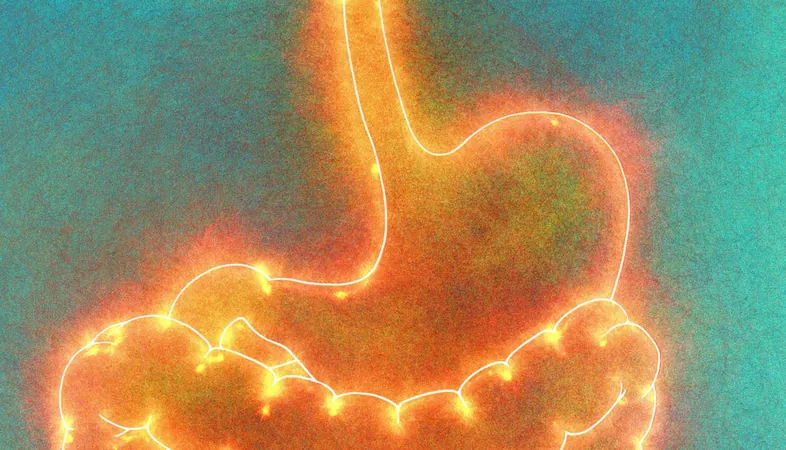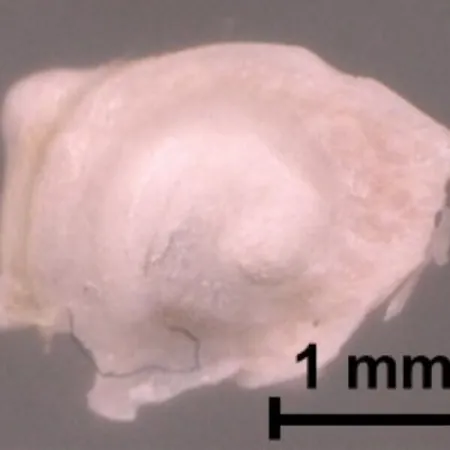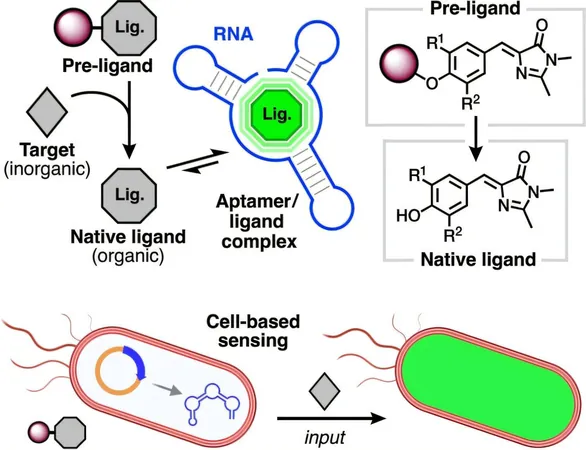
Revolutionary ‘Atlas’ of Stomach Tumors Could Transform Cancer Treatment
2025-03-31
Author: Sarah
A groundbreaking discovery by a team of researchers promises to revolutionize the approach to stomach cancer treatment, one of the deadliest cancers around the globe. By employing advanced mapping technologies, the researchers have created a detailed “atlas” of stomach tumors, unveiling previously hidden patterns of cancer cell behavior, evolution, and their interactions with the surrounding environment.
This innovative research, published in *Cancer Discovery*, marks a significant leap toward developing precise, targeted therapies aimed at increasing survival rates while minimizing side effects. The new findings suggest that treatments can now be more precisely tailored to the unique characteristics of individual patients’ tumors, making strides in the fight against gastric cancer.
The study, conducted by the Singapore Gastric Cancer Consortium—comprised of top-tier doctors and scientists from institutions like Duke-NUS Medical School and the National University Cancer Institute, Singapore (NCIS)—revealed critical differences between cancer cells located at the tumor’s periphery versus those at its core. This distinction sheds light on how these cells engage with their microenvironment to proliferate and spread.
Gastric cancer poses a serious global health challenge, with it being the fifth most common cancer and the third leading cause of cancer-related mortality, accounting for over one million new cases and approximately 770,000 deaths each year. In Singapore alone, it ranks among the top ten causes of cancer fatalities, claiming around 300 lives annually.
In what is one of the largest studies of its kind, the researchers analyzed 226 gastric cancer samples collected from 121 patients at the National University Hospital and other related institutes. By integrating advanced technologies such as spatial transcriptomics and single-cell RNA sequencing—an innovative method that allows the gathering of data from 2,000 microregions in tumor samples—the team constructed a highly detailed map necessary for understanding the heterogeneity of gastric cancer cells. The extensive research spanned over three years, from January 2022 to December 2024.
Professor Patrick Tan, a senior author of the study, likened the integration of these spatial technologies and genetic engineering tools to upgrading from an old map to a high-tech GPS for cancer treatment. “We can now accurately identify where cancer cells are located within a tumor, their behavioral patterns, and factors influencing their mobility. This comprehensive understanding equips us with a powerful tool for developing better, tailored therapies for individual patients.”
Among the significant findings, the researchers identified two distinct subgroups of cancer cells within the same tumor, each associated with different immune cell types and blood vessel environments that influence tumor growth. One subgroup, located at the tumor's core, exhibited signs of low oxygen supply and was less likely to metastasize, while another subgroup at the tumor’s edge showed characteristics of aggressive, invasive cells that posed a greater risk of spreading.
By delving into these complex interactions between tumor cells and their non-cancerous neighbors, researchers pinpointed crucial pathways and genetic markers that dictate tumor behavior. Notably, they discovered that adjacent, non-cancerous cells were influenced by transforming growth factor-beta (TGF-β) signaling—a critical pathway tied to cell growth and immune response regulation. Targeting this pathway could inhibit tumor-promoting environments and significantly improve cancer treatment efficacy.
Further, the study unveiled various evolutionary pathways gastric cancer cells follow, each linked to distinct prognostic outcomes. This information is pivotal as it reveals potential biomarkers for personalized therapies, paving the way for differentiated treatment strategies targeting specific cancer pathways.
“This research breaks new ground in understanding the intricate ecosystem of stomach cancer,” stated Raghav Sundar, another senior author involved in the study. “The advanced techniques we've utilized allow us to carefully map interactions between various cell types within tumors and their surrounding environment, providing crucial insights needed to develop targeted therapies that effectively address local barriers within the tumor microenvironment.”
Armed with these new discoveries, the research team is actively working on identifying additional therapeutic targets for gastric cancer and testing these in pre-clinical models. Their ultimate aim is to unlock smarter, more effective treatment options, moving closer to personalized cancer care that caters to the specific tumor type of each patient.
This pioneering work received substantial support from the National Research Foundation, Singapore, under the National Medical Research Council's Open Fund-Large Collaborative Grant, showcasing the dedication towards combating gastric cancer. The implications of this study could not only reshape the landscape of gastric cancer treatment but also inspire further breakthroughs in cancer research worldwide.




 Brasil (PT)
Brasil (PT)
 Canada (EN)
Canada (EN)
 Chile (ES)
Chile (ES)
 Česko (CS)
Česko (CS)
 대한민국 (KO)
대한민국 (KO)
 España (ES)
España (ES)
 France (FR)
France (FR)
 Hong Kong (EN)
Hong Kong (EN)
 Italia (IT)
Italia (IT)
 日本 (JA)
日本 (JA)
 Magyarország (HU)
Magyarország (HU)
 Norge (NO)
Norge (NO)
 Polska (PL)
Polska (PL)
 Schweiz (DE)
Schweiz (DE)
 Singapore (EN)
Singapore (EN)
 Sverige (SV)
Sverige (SV)
 Suomi (FI)
Suomi (FI)
 Türkiye (TR)
Türkiye (TR)
 الإمارات العربية المتحدة (AR)
الإمارات العربية المتحدة (AR)